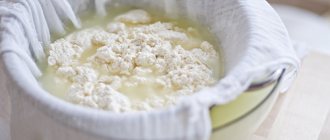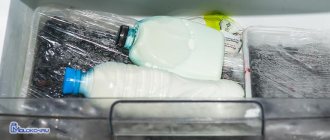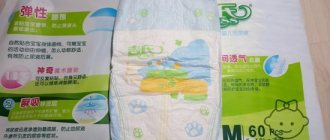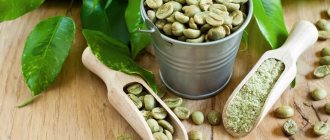Is there an expiration date?
Many types of wine products have an unlimited shelf life and it is not specified in GOST. But despite this, it is not recommended to drink champagne and premium products after three years. Economy segment products should not be consumed a year or two after the date of manufacture.
Important! Experts advise purchasing wine with the latest release date. Shelf life is the period during which the product is suitable for its intended use. After the specified time has expired, it cannot be sold to the consumer.
For wine, the duration of this period directly depends on the content in its composition:
- Sahara;
- acids;
- alcohol;
- tannins.
Guaranteed shelf life is a period of time when physical and chemical processes that affect:
- smell;
- taste;
- compound;
- color;
- consistency;
- sediment
To ensure this period of time as much as possible, manufacturers add sulfur and preservatives that slow down the growth of bacteria. Some wines can be opened and consumed immediately. There are types that require exposure for a certain time.
The drink is aged in special isolated rooms, in basements. For example, all varieties of white wines are consumed two years after production. Elite varieties are sometimes aged for 10, 20, 50, 100 years. The manufacturer is not obliged to set an expiration date for wine in accordance with GOST and the Resolution of June 16, 1997. The countdown is in accordance with GOST R 51074-2003 from the date of manufacture. For wines, the production date is considered to be the bottling date.
Symptoms of wine poisoning
One of the most dangerous is poisoning from homemade wine infused with berries with seeds. There are several forms of poisoning:
- Lightning fast. The victim almost immediately loses consciousness and dies after short-term convulsions. It only takes 15 minutes from the onset of symptoms to death.
- Extremely difficult. Events develop with a little less speed, death also occurs quickly. Here a phase of short-term excitement followed by loss of consciousness is possible.
But this is all rare and in such forms, a person’s salvation is unlikely. In milder cases of wine poisoning, symptoms appear gradually and the stages of development of intoxication can be distinguished.
The first signs of poisoning
A characteristic sign of such poisoning is the appearance of a bitter almond taste. It is accompanied by a feeling of sore throat, numbness in the mouth, and a metallic taste. There are pressing pains in the chest, a feeling of lack of air, although there is no obvious shortness of breath yet. Possible headache, tinnitus, dizziness.
Breathing problems
Since the poison affects the central nervous system, further clinical manifestations will indicate its damage. As a result of the toxic effect on the respiratory center, which is vital, shortness of breath first increases, then rapid breathing becomes pathological, when periods of deep inhalations and exhalations are replaced by pauses of absence of respiratory movements.
Suppression of the cardiovascular center also develops, which leads to a decrease in blood pressure and bradycardia. Chest pain intensifies. The stage ends with loss of consciousness.
Convulsive syndrome
Then comes a period of convulsions. There may be several attacks. They last from half a minute to several. In the intervals between attacks it is noted:
- severe tremor (shaking) of the body;
- breathing slows down;
- there is no consciousness;
- pulse slow, blood pressure low;
- the pupils are dilated, their reaction to light is not visible, the eyes become sunken.
Development of paralysis
The victim is in a deep coma. This is essentially the terminal stage of poisoning. There is a lack of reflexes and involuntary defecation and urination. Then death may occur.
In mild forms of poisoning, symptoms are limited to the initial stage and recovery occurs relatively quickly - in about 3 days.
In the moderate form, clinical manifestations of the second stage are observed. Recovery in this case occurs in 4–6 days.
When poisoning is severe, a person’s condition depends on the time of initiation of treatment measures.
Marking
- Each glass container produced by the manufacturer must have a label. The marking on it must comply with GOST R 51074, taking into account the characteristics of this product.
- On bottles with sparkling and champagne varieties, and on those that are exported, a necklace is stuck on, which indicates the aging period of the product, the year of manufacture, the date of champagne and the year of circulation, with the designation “vintage”, “aged”.
- The date of bottling is indicated on the back or front side of the labels, on consumer packaging or on other packaging items. The “guaranteed shelf life ... of a year” is indicated, and next to it is the inscription “Shelf life is unlimited.” So the manufacturer indicates that after this time, the taste may change, but the contents will not become poison. GOST 51074(3).
- Wooden containers or corrugated cardboard boxes are marked in accordance with GOST 14192, with handling signs: “Keep away from fire”, “Fragile. Caution", "Up".
- On the front side of the label, for sparkling varieties, the year of champagne is indicated, for collection varieties, the year of circulation. You can also read about storage procedures there.
- On bottles of collection wines, a ringlet indicating the year of harvest is attached, and an additional label must be attached with the explanation “...aged in the collection....years.” GOST R 51074.
What determines the shelf life?
The drink, bottled in darkened glass bottles and sealed with thick cork stoppers, can last for years. If the conditions meet all the rules.
- Temperature regime. To ensure that the fermentation process does not stop, you need to ensure a constant room temperature of 10-14°.
- Humidity. Not lower than 55%, not higher than 80%.
- Position and vibration. Initially place the bottles in such a way that they will remain there for a long time. Do not move or shake. The optimal position is horizontal, it prevents the cork from drying out.
- Light. Avoid exposure to sunlight. Optimally: keep in basements, in specially equipped cabinets, in dark bottles.
- Tara. Darkened glass containers fully ensure quality. Plastic and transparent ones are not suitable for long-term exposure.
How long does red and white wine last?
In a glass bottle
According to GOST 32030-2013, each type has its own aging period:
- white 2-5 years;
- red up to 20 years;
- more than three years – sparkling varieties (read more about the shelf life and storage of sparkling wine here).
The duration of storage of the drink in the bottle is determined by:
- variety;
- conditions created for storage;
- sugar and tannin content.
Special wine lists can tell the owner in more detail how much and how the wine is stored.
Packaged in tetra pack
Bagged wine does not mean bad. Global branded manufacturers bottle their inexpensive products in cardboard boxes. It can stay in such boxes for 6-12 months.
Attention! After opening the package, the drink can be consumed within 7 days and kept in the refrigerator.
Proper wine storage
To prevent wine from spoiling, it should be stored properly. It should be noted that wine that is made at the factory and homemade wine are stored using completely different technologies. However, it is better to keep both drinks in cool rooms, free of foreign odors. After all, even when clogged it absorbs foreign aromas.
These wines also differ in shelf life. A homemade drink without loss of taste in good conditions can retain its unforgettable aroma for up to seven years. But alcohol made at a winery can be stored much longer.
Modern winemakers and plastic bottles
In modern wine production, there are a number of reservations when plastic containers are acceptable without losing the original quality of the drink. Many producers, having analyzed the sales market, agreed that the produced inexpensive young wine reaches the consumer within a month.
That is why, in order not to spend money on expensive glass containers, they decided to produce wine in a certain segment in plastic containers. This is especially appropriate when such inexpensive drinks are transported by sea or land over long distances.
As you can see, wine can be stored in plastic bottles, but not for long. Even if it is a bottle specialized for wine, after just six months the properties of the drink in it change. Therefore, if you want to drink high-quality and tasty wine, buy yourself a bottle made of traditional glass. Also, do not store homemade wine in plastic; use glass for fermentation and further storage of finished wine.
How can you store it at home?
A corked bottle
A sealed glass bottle should not be kept in the refrigerator for the following reasons:
- too much vibration when you slam the door;
- harsh light when opening;
- low temperature.
It is forbidden to keep the drink at room temperature. Attic, apartment, refrigerator - a contradictory trinity for wine.
Closed tetrapack packaging
Will last up to 28 days in the refrigerator. If the integrity of the box is not damaged or swollen, the contents are still valid after the expiration date. Storage at room temperature is unacceptable for both closed and open packaging.
Open container
In the first minutes after opening, air enters a bottle of wine, which negatively affects its quality, and a natural question arises as to how long such a drink can be stored. Changes in taste are noticeable after 2-3 days. To extend its life, it is enough to pour it into another container, smaller in size. Seal tightly with a stopper and place in the refrigerator. Here's how long you can store the drink after opening the bottle with the cap closed:
- sparkling wine - from 4 to 24 hours (read about expiration dates and storage of champagne in a closed and uncorked bottle here);
- white – from 1-3 days;
- fortified red – up to 7 days.
Many people are interested in whether it is possible to store open containers at room temperature and how long red or other wine will last after opening the bottle.
Attention! Wine cannot be stored at room temperature and daylight.
Now you know how long you can store an open bottle of wine.
Homemade drink
Wine first:
- bottled;
- sealed with a stopper;
- wrapped in a rag;
- immersed in hot water.
When the temperature of the wine reaches 60°, stand for 20 minutes. Place it in a permanent storage location. This way it will retain its qualities for 5-7 years. The conditions for homemade wine are the same as for industrial wines. Temperature, humidity, light should be set as for industrial varieties.
Our experts have prepared for you other articles about the shelf life and storage of alcoholic products, including beer, cognac and vodka.
Modern plastic containers for storing wine
But the production process does not stand still, so modern manufacturers have made special containers for storing wine in plastic bottles. These companies claim that the plastic they used is completely passive and therefore does not interact with alcohol (or with other products). They are also impermeable to all gases, i.e. wine does not oxidize under the influence of oxygen.
But how long can you store wine in a plastic bottle? In fact, despite the apparent quality of plastic, it is not as ideal for storage as glass containers. More recently, in the homeland of the most delicious wine, France, scientists conducted a small but interesting experiment.
In the laboratory, they created a simple model of wine by mixing two ethyl esters (complex forms) and two alcohols. Next, they were poured into an acidified aqueous solution of ethyl alcohol. These four elements are the main elements that give flavor to alcoholic beverages.
By pouring the wine substitute into a special plastic container, scientists monitored its changes. Based on the results of the study, we can say that the mixture and plastic did not come into contact, so it is not dangerous to humans.
But some elements quietly leaked through the walls of food-grade plastic. For example, 4-ethylphenol (responsible for the subtle aroma) leaked almost half of the total volume, and ethyl hexanoate (gives the wine a fruity taste) leaked into the plastic by a quarter of the total volume.
Accordingly, such properties of polyethylene to absorb certain alcohol substances significantly affect its taste. These studies have been disputed by other scientists, since there was still no real tasting. A second stage is planned, where professional tasters will be involved in the experiment, but for now winemakers are not taking risks with storing a good drink.
Of course, whether it is possible to store wine in plastic containers is up to the manufacturer to decide, but if it has a high quality mark, then there is no need to spoil the drink with polyethylene. If you use plastic containers, you need to choose high-quality ones, preferably with a large number of layers so that they do not allow oxygen to pass through. Such containers are well suited for homemade wine, which is usually not stored for long in plastic bottles.
Is it possible to use expired?
After the expiration date, wine does not turn into poison or poison. It is quite suitable for consumption, but the taste is not the same, the color may change and sediment appears at the bottom. The aging process is good for elite vintage wines. For wines sold in stores, this process does not add flavor.
Wine is a drink that requires special storage conditions. Compliance with these conditions allows you to store wine longer and prolong the pleasure of drinking it.
If you find an error, please select a piece of text and press Ctrl+Enter.
First aid for wine poisoning
What to do if wine poisoning occurs? The recommendations apply to persons who do not have any medical education.
- Call an ambulance, and then everything else.
- If there is no consciousness, lay the victim on a flat surface, place a roll of rolled-up clothing under his head and turn it to one side so that the tongue does not get stuck.
- Ensure the presence of breathing and cardiac activity. If they are absent, cardiopulmonary resuscitation must be performed.
- Administer the antidote.
More often than not it's not so bad. The patient is conscious and experiences the “delights” of the first or second stage. First aid in case of wine poisoning will be provided by those who are nearby. In this case, it is also worth laying him down, but only on pillows, because the person is experiencing a lack of air. The lying position will protect him from falling if he loses consciousness and develops convulsions.
If there is a need for indirect cardiac massage, it is performed with two palms, placing them on top of each other and placing them on the border of the middle and lower third of the sternum. Apply rhythmic pressure. Important: you need to press hard, otherwise instead of an indirect cardiac massage you will get a direct chest massage. The ratio of presses and breaths (with artificial respiration) is 30:2. That is, 30 presses and 2 breaths in a circle.
As for the antidote, for cyanide poisoning, it is regular sugar. It is better to make a concentrated solution and give it to drink so that the effect occurs as quickly as possible. In case of suspected surrogate wine, ethanol is the antidote.










